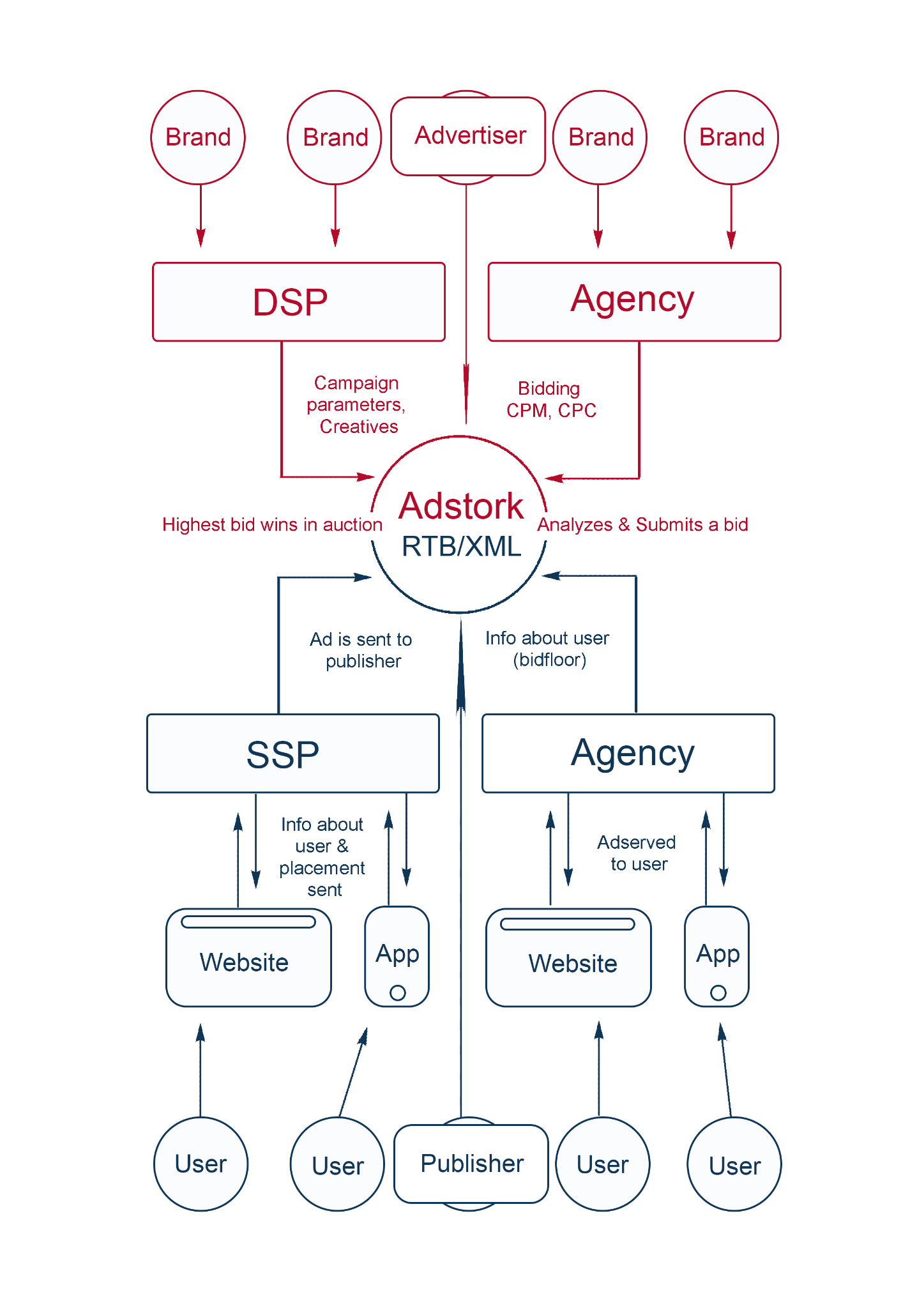
The ideal advertising network for seamless RTB and XML collaborations
Adstork empowers SSPs to easily integrate and sell traffic through RTB and XML feeds, while giving DSPs access to exclusive premium inventory, advanced targeting, and real-time analytics. This seamless setup helps both sides maximize revenue and achieve scalable growth.
Get Started with us
